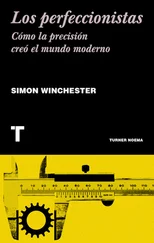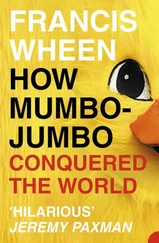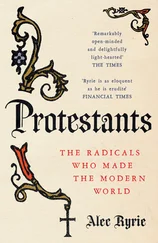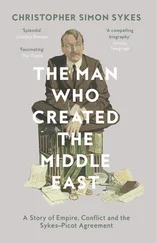A somewhat simpler means of explaining much the same thing is with a three-ring target for pistol shooting. Let us say you shoot six shots at the target, and all six shots hit wide of the mark, don’t even graze the target—you are shooting here with neither accuracy nor precision.
Maybe your shots are all within the inner ring but are widely dispersed around the target. Here you have great accuracy, being close to the bull’s-eye, but little precision, in that your shots all fall in different places on the target.
Perhaps your shots all fall between the inner and outer rings and are all very close to one another. Here you have great precision but not sufficient accuracy.

The image of a target offers an easy means of differentiating precision and accuracy. In A, the shots are close and clustered around the bull: there is both precision and accuracy. In B, there is precision, yes, but insofar as the shots miss the bull, they are inaccurate. C, with the shots widely dispersed, shows neither precision nor accuracy. And in D, with some clustering and some proximity to the bull, there is moderate accuracy and moderate precision—but very moderate.
Finally, the most desired case, the drumroll result: your shots are all clustered together and have all hit the bull’s-eye. Here you have performed ideally in that you have achieved both great accuracy and great precision.
In each of these cases, whether writing the value of pi or shooting at a target, you achieve accuracy when the accumulation of results is close to the desired value, which in these examples is either the true value of the constant or the center of the target. Precision, by contrast, is attained when the accumulated results are similar to one another, when the shooting attempt is achieved many times with exactly the same outcome—even though that outcome may not necessarily reflect the true value of the desired end. In summary, accuracy is true to the intention; precision is true to itself.
One last definition needs to be added to this mass of confusion: the concept of tolerance. Tolerance is an especially important concept here for reasons both philosophical and organizational, the latter because it forms the simple organizing principle of this book. Because an ever-increasing desire for ever-higher precision seems to be a leitmotif of modern society, I have arranged the chapters that follow in ascending order of tolerance, with low tolerances of 0.1 and 0.01 starting the story and the absurdly, near-impossibly high tolerances to which some scientists work today—claims of measurements of differences of as little as 0.000 000 000 000 000 000 000 000 000 01 grams, 10 to the -28th grams , have recently been made, for example—toward the end. *
Yet this principle also prompts a more general philosophical question: why? Why the need for such tolerances? Does a race for the ever-increasing precision suggested by these measurements actually offer any real benefit to human society? Is there perhaps a risk that we are somehow fetishizing precision, making things to ever-more-extraordinary tolerances simply because we can, or because we believe we should be able to? These are questions for later, but they nonetheless prompt a need here to define tolerance, so that we know as much about this singular aspect of precision as about precision itself.
Although I have mentioned that one may be precise in the way one uses language, or accurate in the painting of a picture, most of this book will examine these properties as far as they apply to manufactured objects, and in most cases to objects that are manufactured by the machining of hard substances: metal, glass, ceramics, and so forth. Not wood, though. For while it can be tempting to look at an exquisite piece of wooden furniture or temple architecture and to admire the accuracy of the planing and the precision of the joints, the concepts of precision and accuracy can never be strictly applied to objects made of wood—because wood is flexible; it swells and contracts in unpredictable ways; it can never be truly of a fixed dimension because by its very nature it is a substance still fixed in the natural world. Whether planed or jointed, lapped or milled, or varnished to a brilliant luster, it is fundamentally inherently imprecise.
A piece of highly machined metal, however, or a lens of polished glass, an edge of fired ceramic—these can be made with true and lasting precision, and if the manufacturing process is impeccable, they can be made time and time again, each one the same, each one potentially interchangeable for any other.
Any piece of manufactured metal (or glass or ceramic) must have chemical and physical properties: it must have mass, density, a coefficient of expansion, a degree of hardness, specific heat, and so on. It must also have dimensions: length, height, and width. It must possess geometric characteristics: it must have measurable degrees of straightness, of flatness, of circularity, cylindricity, perpendicularity, symmetry, parallelism, and position—among a mesmerizing host of other qualities even more arcane and obscure.
And for all these dimensions and geometries, the piece of machined metal must have a degree of what has come to be known *as tolerance. It has to have a tolerance of some degree if it is to fit in some way in a machine, whether that machine is a clock, a ballpoint pen, a jet engine, a telescope, or a guidance system for a torpedo. There is precious little point in tolerance if the machined object is simply to stand upright and alone in the middle of a desert. But to fit with another equally finely machined piece of metal, the piece in question must have an agreed or stated amount of permissible variation in its dimensions or geometry that will allow it to fit. That allowable variation is the tolerance, and the more precise the manufactured piece, the greater the tolerance that will be needed and specified.
A shoe, for instance, is invariably a thing of very low tolerance: on the one hand, a poorly made slipper may have “an agreed or stated amount of allowable variation in its dimensions” (which is the engineer’s formal definition of tolerance) of half an inch, with so generous an amount of wiggle room between foot and lining as to make the notion of precision almost irrelevant. A handmade brogue shoe by Lobb of London, on the other hand (or foot), may seem to fit snugly, perfectly, precisely even, but it will still have a tolerance of maybe an eighth of an inch—and in a shoe, such a tolerance would be acceptable, and the shoe indeed worn with pride. Yet, in terms of precision engineering, it is anything but precisely made; nor is it even accurately so. *
ONE OF THE two most precise measuring instruments ever built by human agency stands in America’s Pacific Northwest, far away from everything, in the arid middle of Washington State. It was built just outside the top-secret nuclear installation where the United States created the first supplies of plutonium for the bomb that destroyed Nagasaki, for decades the material at the heart of much of the nation’s arsenal of atomic weapons.
The years of nuclear activity there have left an unimaginably large legacy of dangerously irradiated substances, from old fuel rods to contaminated items of clothing, which are only now, and after a loud public outcry, being remedied—or remediated , the term environmentalists prefer. Today, the Hanford site, as it is known, is officially the largest environmental cleanup site in the world, with decontamination bills reaching the tens of billions of dollars and the necessary remedial work likely to last until the middle of the twenty-first century.
Читать дальше













